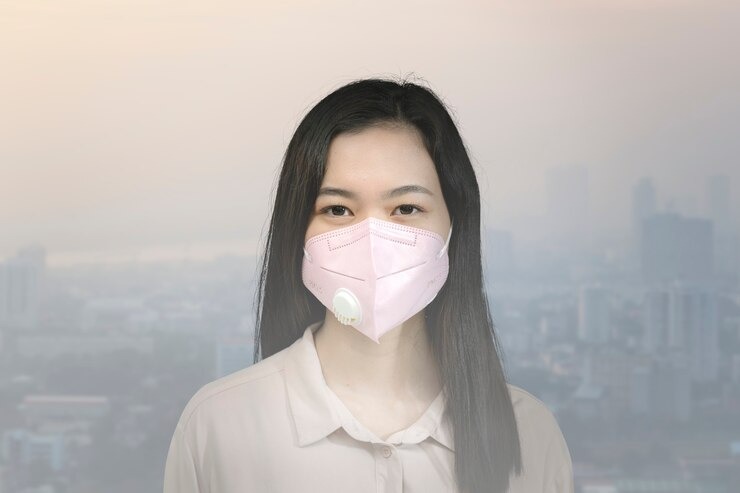- Spot the Early Signs of Gynaecomastia: A Guide from Board Certified Plastic Surgeons
- Effects of Pollution on Skin
- Elevating Self-Care: A Holistic Guide to Body Care by Pristine Cosmesis Clinic.
- HAIR LOSS –WHY AND HOW?
- PLASTIC SURGERY MYTHS AND FACTS
- 6 Interesting Facts of Plastic Surgery We Should Know
- Transform Your Look: How Hair Transplant Can Change Your Life
- The complete guide to Botox treatment
- PREVENTION OF FIRECRACKER BURNS
- VITILIGO AWARENESS-CURE AND CARE
- PRE WEDDING SKIN CARE ROUTINE FOR WEDDING SEASON
- Hair Regrowth is Possible
- 6 Interesting Facts of Plastic Surgery We Should Know
- Tips To Prevent Acne Scars
- SUMMER SKIN CARE TIPS
- Know your Dermatologist
- DRY SKIN DO’s & DONT’S
- DARK (UNDEREYE) CIRCLES
- Everything You Need To Know About Hair Transplants
Effects of Pollution on Skin

Effects of Pollution on Skin
India, a land of diverse cultures, traditions, and landscapes, is grappling with a significant issue that transcends its vibrant tapestry the adverse effects of pollution on skin health. With rapid industrialization, urbanization, and a burgeoning population, the country is experiencing an unprecedented rise in pollution levels, notably air pollution, which profoundly impacts the skin health of its inhabitants.
What is Air Pollution
Air pollution refers to the presence of harmful substances in the air that can have detrimental effects on human health, the environment, and other living organisms. These substances, known as pollutants, can be either natural or human-made and can come from various sources, including industrial activities, transportation, agriculture, and natural processes.
There are several types of air pollutants:
1. Particulate Matter (PM): These are tiny particles suspended in the air, including dust, dirt, soot, smoke, and liquid droplets.
2. Ozone (O3): While beneficial in the upper atmosphere as the ozone layer, at ground level, its a harmful pollutant formed by chemical reactions between nitrogen oxides (NOx) and volatile organic compounds (VOCs), primarily in sunlight.
3. Nitrogen Oxides (NOx): Produced from combustion processes, mainly from vehicles and industrial activities, these gases contribute to smog formation, acid rain, and respiratory issues.
4. Sulfur Oxides (SOx): These gases result from the burning of fossil fuels containing sulfur, leading to acid rain, respiratory problems, and damage to vegetation.
5. Carbon Monoxide (CO): A colorless, odorless gas produced by incomplete combustion of fuels. High levels can be lethal as it prevents oxygen from reaching body tissues.
Understanding the Impact
Air Pollution and Skin Health
Air pollution in India, predominantly driven by vehicular emissions, industrial pollutants, and biomass burning, poses a severe threat to skin health. The fine particulate matter (PM2.5) and harmful gases like sulfur dioxide (SO2), nitrogen oxides (NOx), and ozone (O3) penetrate the skin, leading to oxidative stress, inflammation, and premature aging.
UV radiation and Pollution
The synergy between UV radiation and pollution exacerbates skin damage. The pollutants intensify the harmful effects of UV rays, causing skin dehydration, pigmentation, and even skin cancers
Mitigating the Impact
Cleansing and protection :- Adopting a rigorous cleansing routine to remove pollutants from the skins surface is paramount. Use gentle cleansers containing antioxidants like vitamin C or E to combat oxidative stress. Additionally, sun protection through the consistent application of broad-spectrum sunscreen shields the skin from harmful UV rays and pollution.
Antioxidant-Rich Skincare :- Antioxidants play a pivotal role in neutralizing free radicals generated by pollution. Incorporating skincare products rich in antioxidants—such as green tea extract, niacinamide, or retinol—can bolster the skins defense against pollution-induced damage.
Hydration and Nourishment :- Maintaining skin hydration is essential to strengthen its barrier against pollutants. Hyaluronic acid-based moisturizers and hydrating serums aid in retaining moisture, preventing skin dehydration caused by pollution.
Conclusion:-
Pristine cosmesis tackles common skin issues induced by pollution through specialized skincare treatments. Its formulations, rich in antioxidants and barrier-strengthening agents, combat acne by cleansing deeply and preventing pore clogging. These treatments also target premature aging, replenishing lost moisture and vital nutrients to counteract fine lines and wrinkles.
Additionally, pristine cosmesis alleviates skin sensitivity and allergies by soothing inflammation and fortifying the skin barrier. By prioritizing protection, purification, and restoration, these treatments provide a holistic approach to safeguarding skin health against the detrimental effects of pollution.
